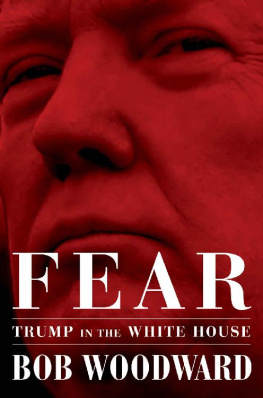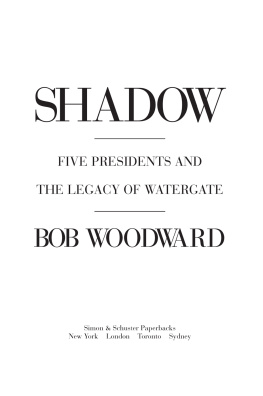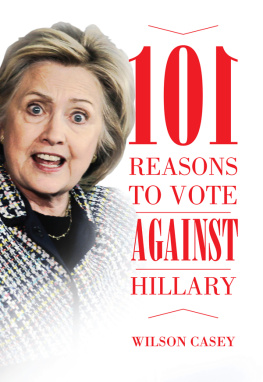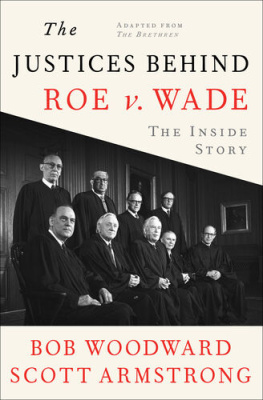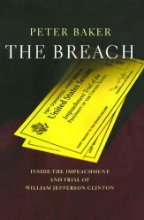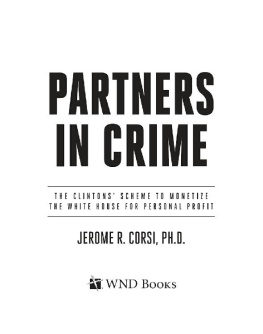Thank you for downloading this Simon & Schuster eBook.
Join our mailing list and get updates on new releases, deals, bonus content and other great books from Simon & Schuster.
C LICK H ERE T O S IGN U P
or visit us online to sign up at
eBookNews.SimonandSchuster.com
We hope you enjoyed reading this Simon & Schuster eBook.
Join our mailing list and get updates on new releases, deals, bonus content and other great books from Simon & Schuster.
C LICK H ERE T O S IGN U P
or visit us online to sign up at
eBookNews.SimonandSchuster.com
Also by Bob Woodward
Plan of Attack
Bush at War
Maestro: Greenspans Fed and the American Boom
Shadow: Five Presidents and the Legacy of Watergate
The Choice
The Commanders
Veil: The Secret Wars of the CIA 19811987
Wired: The Short Life and Fast Times of John Belushi
The Brethren ( with Scott Armstrong )
The Final Days ( with Carl Bernstein )
All the Presidents Men ( with Carl Bernstein )

SIMON & SCHUSTER PAPERBACKS
Rockefeller Center
1230 Avenue of the Americas
New York, NY 10020
www.SimonandSchuster.com
Copyright 1994, 1995 by Bob Woodward
All rights reserved, including the right of reproduction in whole or in part in any form.
First Simon & Schuster paperback edition November 2006
S IMON & S CHUSTER P APERBACKS and colophon are registered trademarks of Simon & Schuster, Inc.
For information about special discounts for bulk purchases, please contact Simon & Schuster Sales at 1-800-456-6798 or
The Library of Congress has cataloged the hardcover edition as follows:
ISBN-13: 978-1-4165-5281-9
ISBN-10: 1-4165-5281-2
AUTHORS NOTE
D AVID G REENBERG , a 1990 graduate of Yale University, was my assistant and a full participant at every stage of this book. David performed extensive research, reporting, writing, editing, and organizing. A toughminded, independent, and creative thinker, he repeatedly worked to bring greater balance, fairness, and clarity to our reporting and writing. Without his resourcefulness and drive, the book would not have been possible. No writer ever worked with a more cherished or more trusted collaborator.
TO ELSA AND TALI
Contents
INTRODUCTION
A T THE HEART OF B ILL C LINTON S 1992 presidential campaign was his pledge to fix the economy and to use the presidency to do it. The fundamental difference between George Bush and himself, Clinton said, was his belief in an activist role for the government. I know how President Lincoln felt when General McClellan wouldnt attack in the Civil War, Clinton said when he accepted the Democratic Partys nomination on July 16, 1992. He asked him, If youre not going to use your army, may I borrow it? And so I say: George Bush, if you wont use your power to help people, step aside, I will. This book is about President Clintons effort to make good on his promise, I will.
M Y INITIAL WORK on economic policy making began in early 1992 and focused on the Bush administration. When it became clear the economy was the major issue in the presidential campaign, I wrote a series of four articles in The Washington Post called Making Choices: Bushs Economic Record. The series, published in October 1992, followed the disarray and turmoil from Bushs 1988 presidential campaign pledge of no new taxes, to his decision to support them in his 1990 budget deal with Congress, and finally to his repudiation of his own deal during the 1992 campaign.
After Bushs defeat, I turned to the matter that would become this book: Clinton, his economic ideas, and his administrations handling of economic policy in the first year. Overall, more than 250 people were interviewed. Dozens of these people were interviewed many times, frequently in evening-long dinner sessions or at some length in their offices. A great many of them permitted me to tape-record the interviews; otherwise I took detailed notes. Many also provided me with memoranda, meeting notes, diaries, transcripts, schedules, or other documentation.
Nearly all the interviews were conducted on deep background, which means that I agreed not to identify these sources. Without such a stipulation, people often will not discuss their conversations or interactions with the president or other high-level officials franklyor at all. I took care to compare and verify various sources accounts of the same events. The extensive documentation, and the willingness of key sources to allow me to review with them important meetings, discussions, and decisions many times, has resulted in an unusually detailed record of the first year of Clintons presidency on economic issues.
Dialogue and quotations come from at least one participant, from memos, or from contemporaneous notes or diaries of a participant in the discussion. When someone is said to have thought or felt something, that description comes from the person himself or from someone to whom he said it directly. I have tried to preserve the participants own language as much as possible, even when they are not directly quoted, in order to reflect the flavor of their speech and their attitudes as best I could. Quotation marks were not used when the memories of sources or the documentation was not precise about wording.
A copy of all documents, notes, transcripts, and tape recordings of interviews will be deposited with the Yale University Library. The files will be opened to the public and researchers in 40 years to provide the exact source or sources for each portion of the book.
The record will show how I was able to gain information from records or interviews, often immediately or soon after the events. I could then talk with other sources and return to most of them again and again as necessary. When this reinterviewing raised new questions, I was able to return a third or fourth time to key sources to answer those new questions. At times I conducted 20 interviews with as many as 10 sources on a single meeting or decision.
The accounts I have compiled may, at times, be more comprehensive than what a future historian, who has to rely on a single memo, letter, or recollection of what happened, might be able to piece together. At the same time, this book does not have the perspective of history, and it should not be considered definitive. Events, new information, and documentation will deepen and improve understanding of Clinton and his presidency.
Much of this book was reported while events were developing, before the outcomes and consequences were known or imagined. As a result, I believe, it contains some events that otherwise might have been lost to the record. David Greenberg, my assistant, and I have attempted to ensure that we have provided the fullest, fairest account based on the information available to us.
No journalist or historian can capture 100 percent of what happened. Neither journalism nor history provides an engineers drawing of events. And participants often disagree. Memory, perspective, and self-interest play their parts. There are statements and events in this book that some of those involved or the sources themselves possibly will not rememberor may not want to remember. Besides, this book is about politics, and politics is about contested ground. I have, however, attempted to give every key participant in these events an opportunity to offer his or her recollections and views.
This book falls between newspaper journalism and history. In the information cycle, the newspapers, television, and magazines provide the first and second waves of explanation of events in the days or weeks after they occur. Then, generally after a long interlude, insider memoirs or histories appear. I believe there is a place for reporting that aspires to combine the thoroughness of history with the contemporaneity of journalism. This book aims to find that ground.
Next page


